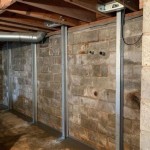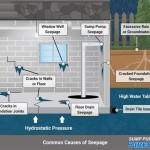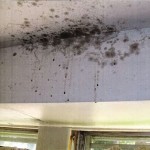Water In Basement Clean Up: Essential Aspects to Consider
Discovering water in your basement can be a stressful experience. Understanding the essential aspects of water in basement clean up can help you handle the situation effectively and minimize the damage.
1. Safety First
Before entering the basement, ensure your safety. Wear protective gear, including gloves, boots, and a mask, to prevent contact with potentially contaminated water and debris. If the water level is high, call a professional water damage restoration company.
2. Determine the Source
Identify the source of the water to prevent further damage. Check for broken pipes, leaking appliances, or cracks in the foundation. Once the source is identified, take steps to stop the water flow, such as shutting off the water valve or repairing the leak.
3. Remove Standing Water
Use a wet/dry vacuum cleaner or pump to remove standing water. Begin from the lowest point and work your way up. If the water is contaminated, follow proper disposal guidelines to prevent environmental harm.
4. Clean and Disinfect
After removing the water, thoroughly clean and disinfect the affected area. Use a disinfectant solution recommended for water damage restoration. Remove all debris, mud, and organic matter that could lead to mold growth.
5. Dry the Basement
Once the area is clean, focus on drying the basement to prevent mold and mildew. Open windows and doors to ventilate the space. Use fans and dehumidifiers to circulate air and remove moisture. Monitor the humidity levels using a hygrometer and keep them below 50%.
6. Structural Inspection and Repairs
After the basement is dry, inspect for any structural damage caused by the water. Check for warped walls, cracked foundations, or damaged floor joists. Contact a structural engineer if necessary to assess the extent of the damage and recommend repairs.
7. Insurance Coverage
Check your homeowner's insurance policy to determine your coverage for water damage. Contact your insurance company to report the incident and file a claim. They may provide compensation for clean up costs, repairs, and replacement of damaged items.
8. Preventative Measures
To prevent future water damage, consider implementing preventative measures such as sump pumps, exterior drainage systems, and proper grading around your home. Regular maintenance of plumbing and appliances can also help detect and address potential leaks before they become major problems.
Conclusion
Water in basement clean up requires prompt action to minimize damage and prevent health hazards. By understanding the essential aspects discussed above, homeowners can effectively clean up their basements and ensure the safety and well-being of their families.

3 Step Clean Up Plan After Your Basement Floods Waterproof Com

How To Clean A Flooded Basement Reviews By Wirecutter

Flooded Basement Cleanup Who To Hire And Steps Take Bob Vila

How To Clean A Flooded Basement News And Events For Systems Inc

Top Methods For Basement Water Removal

Water In Your Basement What To Do And Who Call Forbes Home

Flooded Basement Cleanup Youtube

Fact Sheet Cleaning Up After Flood Sewer Backups Hamilton County Public Health

How To Prevent Mold After Your Basement Floods Enviroclean Of Maine

How To Deal With A Flooded Basement Disaster Recovery Hygiene Blog
See Also








